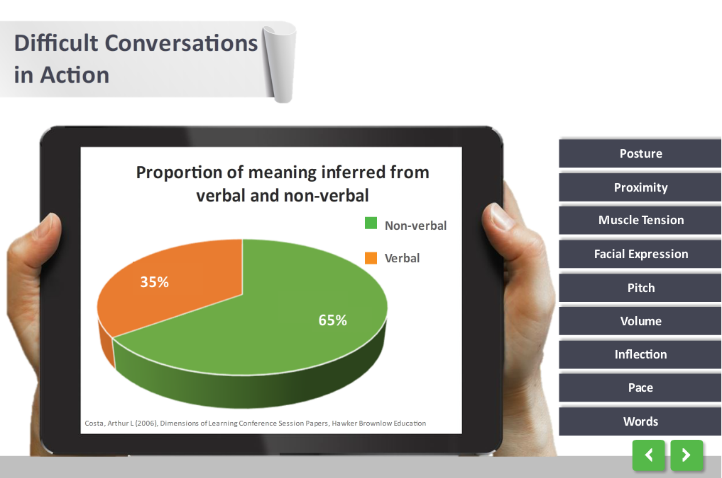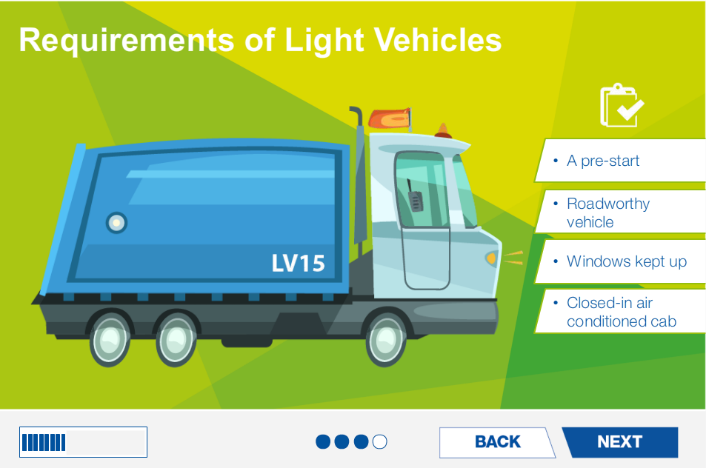
“Everyone is a genius. But if you judge a fish on its ability to climb a tree, it will live its whole life believing it’s stupid.”
- Albert Einstein
Some say that everyone learns differently and can retain information by learning in different ways. This can be a useful consideration when we are designing learning solutions. How do you prefer to learn? Would you rather watch a video, read a document or listen to audio? There doesn’t seem to be a one size fits all approach, everyone has their own preference for how they learn.
Think about a time when you have been in the process of learning something and it has not been successful. Whether it was your boss explaining a process through conversation, receiving a lengthy email or listening to a person speak via a webinar. Whilst this process of learning may have worked for others, it may not have worked for you.
When I was at university I absolutely loved sitting and listening to a lecturer speak and could do so for hours. My university friend on the other hand could not stand it and would rather have learnt through an interactive group activity. There is no right or wrong way of learning it is just what your preference is as a learner.
Whilst learning styles and delivery of learning seems to impact how well people learn and retain information, some have cast doubt on the validity of learning styles as a way of understanding how people better learn. First of all, it is unlikely that a learner is restricted to one type of learning style. Categorising an individual as limited to one specific learning style can lead to a fixed mindset and impact motivation to apply oneself or adapt (The Guardian, 2017). Some research states that students will improve if they think about how they learn best but not because learning content is matched to their self-reported learning style.
For the purpose of this blog we will explore some potential learning styles and discuss some practical ways to implement different forms of learning into our learning solutions.
There are a range of different theories and types of learning styles. In this blog we will focus on the ‘VARK Theory of Learning Styles’ and explore how these styles can be catered for in eLearning courses. The learning styles are:
- Visual
- Auditory
- Read/Write
- Kinaesthetic
Visual
These learners prefer to rely upon a visual learning style, “Show me and I will understand” (Farwell, 2017).
Practical Applications:
Include diagrams, charts, videos, pictures, graphs and graphics in your eLearning module. 

Examples of eLearning with visual elements.
Auditory
These learners prefer to listen to audio explanations about a concept or topic to best understand (Habeeb Omer, 2016).
Practical Applications:
1. Record audio scenarios to support the learning. E.g. record a conversation between two people and have the learner listen to the recording as part of their learning.
2. Include links to audio resources e.g. a podcast.
3. Incorporate voiceover in your learning solution. This involves having a narrator speak about the topic presented on each screen.
Read/Write
These learners prefer to read text and write reflections and notes to learn best (Habeeb Omer, 2016).
Practical Applications:
1. Include enough text for the learner to read throughout the module rather than just having graphics and visual elements.
2. Encourage the learner to make written notes throughout the course (Cherry, 2017).
Examples of eLearning with visual elements.
Auditory
These learners prefer to listen to audio explanations about a concept or topic to best understand (Habeeb Omer, 2016).
Practical Applications:
1. Record audio scenarios to support the learning. E.g. record a conversation between two people and have the learner listen to the recording as part of their learning.
2. Include links to audio resources e.g. a podcast.
3. Incorporate voiceover in your learning solution. This involves having a narrator speak about the topic presented on each screen.
Read/Write
These learners prefer to read text and write reflections and notes to learn best (Habeeb Omer, 2016).
Practical Applications:
1. Include enough text for the learner to read throughout the module rather than just having graphics and visual elements.
2. Encourage the learner to make written notes throughout the course (Cherry, 2017).
3. Provide your learner with a tangible workbook for them to write in at different stages of the module.
Kinaesthetic
These learners prefer learning by actually ‘doing/practising’ the task to be learnt (Habeeb Omer, 2016).
Practical Applications:
Kinaesthetic
These learners prefer learning by actually ‘doing/practising’ the task to be learnt (Habeeb Omer, 2016).
Practical Applications:
Task your learner with quests that require them to do things outside of the online learning environment.
Example of a quest that requires the learner to complete tasks outside of the online learning environment.
An eLearning course can be designed in a range of different ways and to make it effective for all of your learners, it would make sense to cater for all learning styles. It is also important to note that a person’s learning style can change over time and it is common for a person to have more than one learning style. As an instructional designer it is important that your eLearning course incorporates a fair balance of each learning style (Habeeb Omer, 2016).
How do you ensure that you cater for all learning styles in your learning solutions? Do you believe that learning styles are valid/not valid and why? We hope you enjoyed this blog and look forward to exploring this topic into the future.
A little bit about the author...
"I am Hannah and I am passionate about how we can create effective and fun learning experiences. I believe that if you create enjoyment and social connection through learning, learning outcomes can sky rocket! The world is changing and becoming more and more digital by the day. We need to harness this and see what's possible!".
References
Cherry, K. (2017). Overview of VARK Learning Styles. Retrieved from: https://www.verywell.com/vark-learning-styles-2795156.
Farwell, T. (2017). Learning Styles: Visual, Auditory, Kinaesthetic. Retrieved from https://www.familyeducation.com/school/multiple-intelligences/learning-styles-visual-auditory-kinesthetic.
Habeeb Omer, A. (2016). Instructional Design and Learning Styles. Retrieved from: https://www.verywell.com/vark-learning-styles-2795156.
The Guardian (2018). No Evidence to Back Idea of Learning Styles. Retrieved from: https://www.theguardian.com/education/2017/mar/12/no-evidence-to-back-idea-of-learning-styles.





0 Comments
We'd love to hear from you. Send us a message and connect!
Emoji